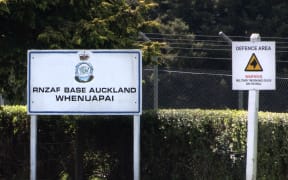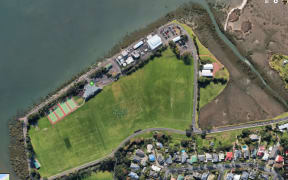Toxic banned firefighting foam has been found at three more airports.

Task Protection Services must stop using the foam in emergencies by 4 May and it has to stop using it for training immediately. Photo: 123RF
Investigators have found the foam in firetrucks or storage drums at Palmerston North, Gisborne, and Hawke's Bay airports.
It has been illegal to import the two types of foam - PFOS and PFOA - since 2006. They have raised health alarms globally since 2000.
The Environmental Protection Authority (EPA) has served a compliance order on the company that runs the firefighting crews at the three airports, Task Protection Services.
The authority last month discovered the banned foam PFOS at Nelson Airport, which was the first tested as part of a nationwide investigation triggered by the Defence Force admitting in December it had polluted areas around airbases with foam chemicals.
"At Palmerston North Airport, laboratory test results regarding foams contained in two fire trucks and various storage drums have come back positive for PFOS," EPA chief executive Dr Allan Freeth said.
"At Gisborne and Hawke's Bay airports, EPA investigators found drums of fire-fighting foam either explicitly labelled as containing "PFAS (PFOA or PFOS)" or labelled with the names of products known to contain PFOS."
The foams are being tested in a lab to confirm what is on the label.
Task Protection Services must stop using the foam by 4 May in emergencies, and it has to stop using it immediately for training.
It has to submit a plan by 10 April on how it will be getting rid of the foam.
Task Protection Services, which holds the firefighting contract at the three airports, said the foams were not used for training or testing and only in the event of an emergency.
"We are happy to see the international approach being taken on matters such as this, and are disappointed at the lack of awareness around the use of this foam by ourselves and the industry," Task Protection Services manager Kim Reade said in a statement.
"We will be working closely with airports to ensure we meet the requirements of the compliance order issued today."
The company was "committed to ensuring the protection of our environment", she said.
"We hope that this situation highlights any improvements to systems and publication/education that can be made in future to ensure a repeat of this does not occur in this industry or any other."
They had not actually used any of the foam at any of the three airports, not even in training, Ms Reade said.
The company did not know the foam was banned and inherited stocks of it when it took over the airport contracts - at Palmerston North in the 1990s, at Hawke's Bay airport in Napier about 15 years ago, and at Gisborne six months ago - she said.
"We have not purchased any foam since 2006," she said, adding she did not have to hand information on how much banned foam the company had, but this information had been passed to the EPA.
"We were not aware it was a banned substance," she said.
Nelson Airport also said last month it had not known it was illegal to buy and use the foam, until it got a compliance notice from the EPA.
The airport firefighting agencies had to do better than that, EPA chief executive Allan Freeth said.
"The understanding around these foams is nowhere near as high as what we expected it to be," Dr Freeth said.
The authority has the option to prosecute the users and importers.
The four airports so far found with banned foam were the only ones on the authority's list of those most likely to have such foams, and the rest of the airports it was now checking were less likely, he said.
Research shows both PFOS and PFOA share similar characteristics - they are incredibly long-lasting, they build up in the body, they are linked to two types of cancer by a study of 69,000 people in the United States - but so far only PFOS is listed as a persistent organic pollutant under the Stockholm Convention. New Zealand's Hazardous Substances and New Organisms Act was amended in 2011 to reflect this.






